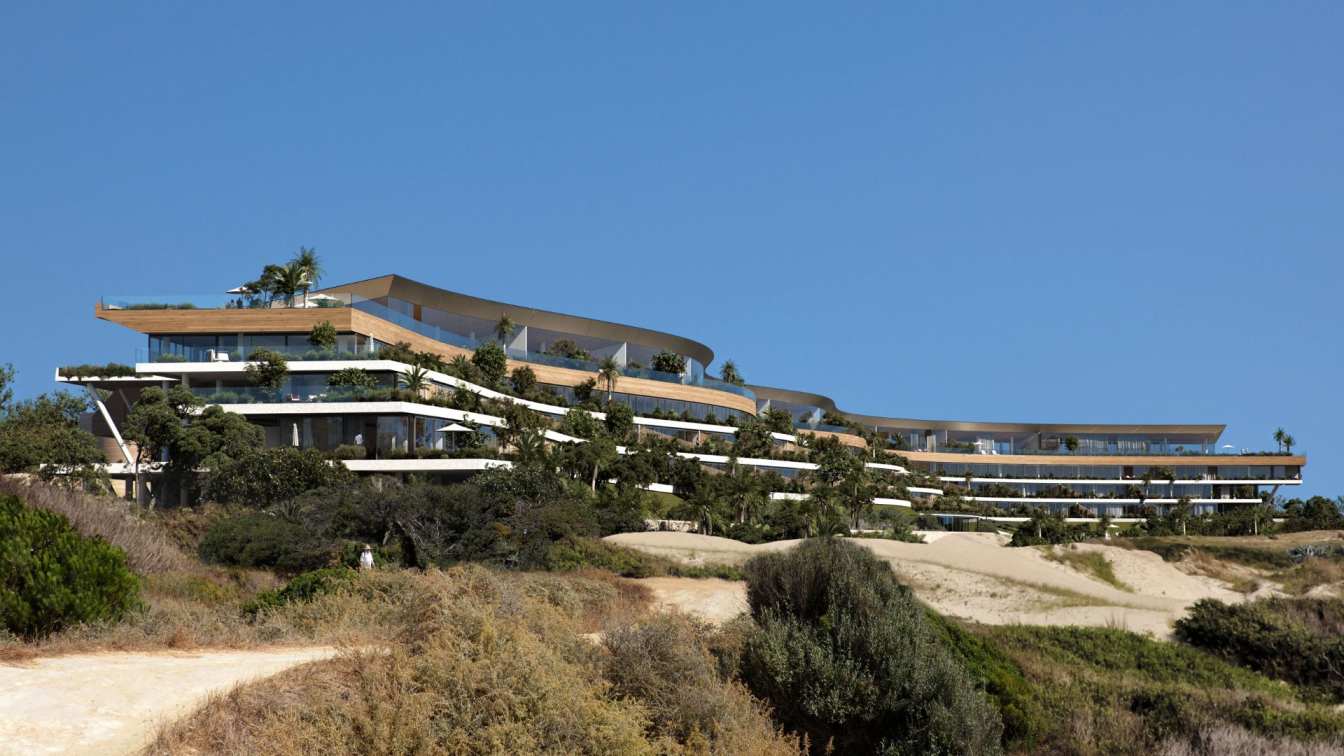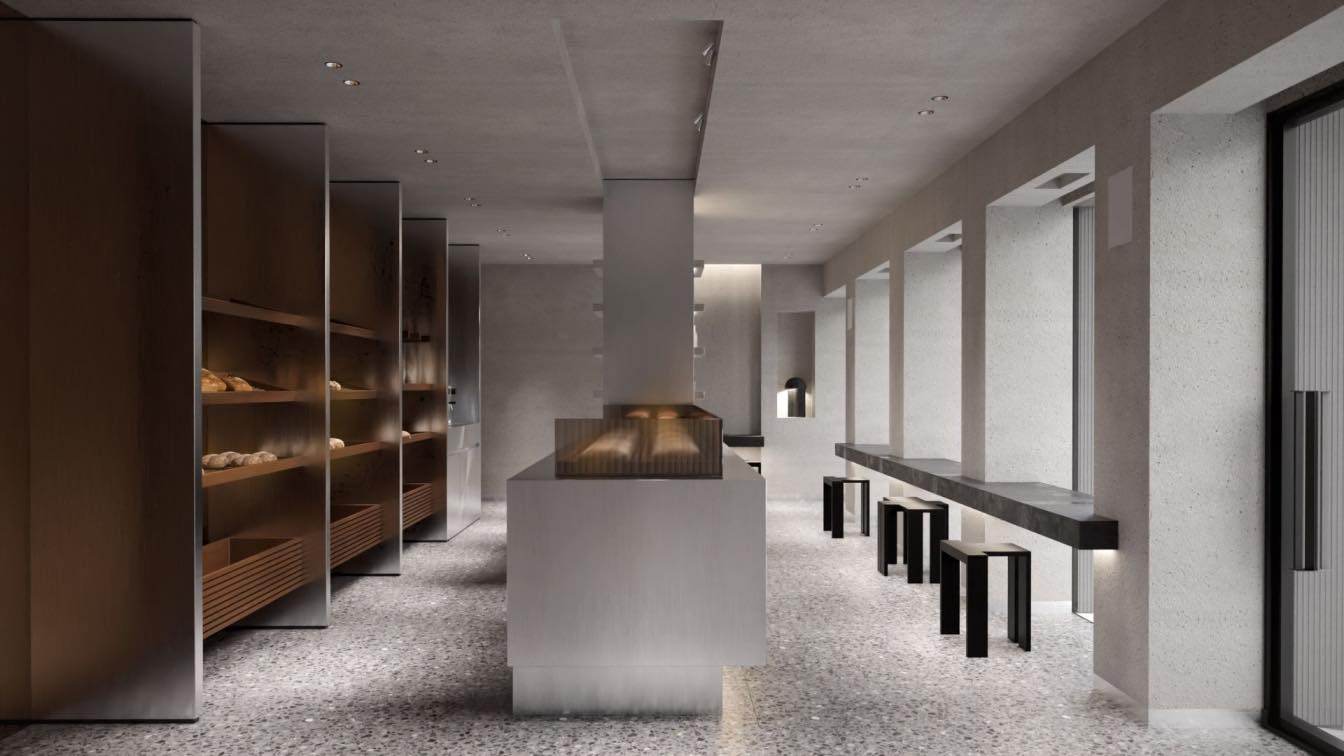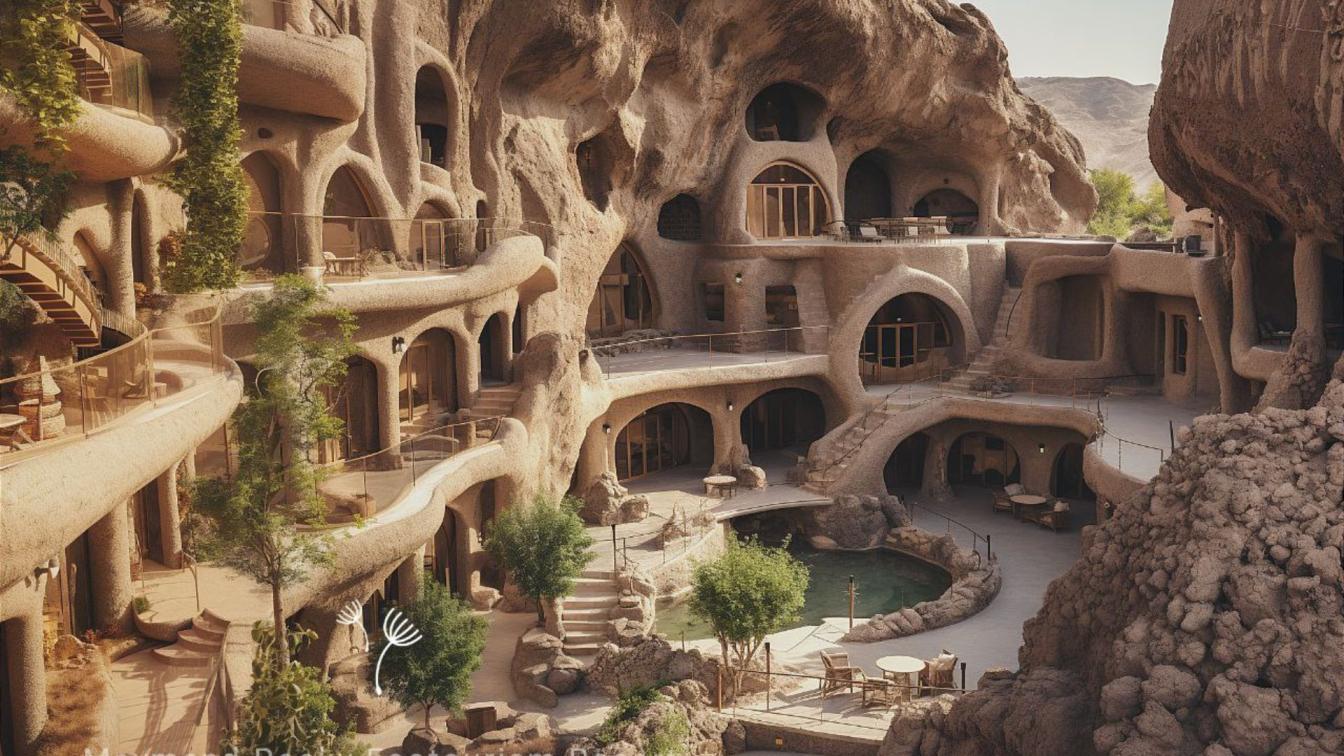Rafael Viñoly Architects is unveiling its design on Médano El Pinar, an innovative, sustainable, multi-family luxury residential development located 15 minutes outside Montevideo, Uruguay. Médano ElPinar is the last project to be designed by the late renowned architect Rafael Viñoly. Médano El Pinar will be nestled behind the dunes of a unique oceanfront location and will feature approximately 120 beach-front units with 1 to 5 bedrooms arranged along the building’s 425-meter length in a terraced, non-overlapping configuration, making each unit feel more like a free-standing house than an apartment.
The building’s long, low-slung, and sinewy shape seamlessly blends into the pristine landscape, offering unparalleled ocean views without compromising privacy. Generously proportioned interiors open to large elevated private gardens with panoramic views, creating a sense of “conscious luxury” – a feeling of being at one with nature in an environment that supports resilience, harmony, and well-being.
Médano El Pinar will be a Mass Timber structure locally sourced and engineered with minimal carbon footprint attributable to transportation. It also aims to be the first nearly Zero-Energy Building. Additional sustainable elements through the building include, utility-scale photovoltaic power generation, redundant centralized thermal plants, rainwater recapture, green roofing, heat pumps, and ubiquitous cross ventilation.

















